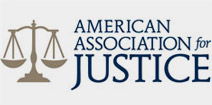
By: Robert B. George, Esquire
There has been a lot of discussion in the media over the past few weeks about the record number of executive orders that have been signed by President Biden. Since being sworn into Office on January 20, 2021, President Biden has signed many executive orders covering a various range of matters that include coronavirus response, the environment, workplace protections, regulation and immigration. But what exactly is an executive order?
In its simplest terms, an executive order is essentially a directive by the President of the United States directing federal agencies to take a specific action. An executive order is different from a bill or an act that is sent to Congress in that it does not require legislative approval. Executive orders are one of the most common documents issued by the President under our current government. In fact, every President has issued at least one since George Washington took office in 1789. The average citizen, however, generally only hears about them via a brief reference about the issuance of a certain executive order from various news outlets, generally talking about changes made or changes proposed to be made by executive order, but which rarely explain what the document is, why it is issued, and how it came to be issued.
An executive order is a signed, written, and published directive from the President that manages operations of the federal government. They are numbered consecutively, so executive orders may be referenced by their assigned number or their topic. Other presidential documents are sometimes similar to executive orders in their format, formality, and issue, but have different purposes. Proclamations, which are also signed and numbered consecutively, communicate information on holidays, commemorations, federal observances, and trade. Administrative orders, such as memos, notices, letters, and messages, are not numbered, but are still signed, and are used to manage administrative matters of the federal government. All three types of presidential documents—executive orders, proclamations, and certain administrative orders—are published and can be viewed in what is known as the Federal Register, which is the daily journal of the federal government that is published to inform the public about federal regulations and actions. They are also catalogued by the National Archives as official documents produced by the federal government.
Both executive orders and proclamations have the force of law, much like regulations issued by federal agencies, so they are codified under Title 3 of the Code of Federal Regulations; that is the formal collection of all of the rules and regulations issued by the executive branch and other federal agencies. Executive orders are not legislation and, as such, require no approval by Congress. Conversely, Congress cannot simply overturn them, but it may pass legislation that might make it difficult, or even impossible, to carry out the orders, such as removing funding. Only a sitting President may overturn an existing executive order by issuing another executive order to that effect.
The format, substance, and documentation of executive orders has varied across the history of the presidency. Today, executive orders follow a format and strict documentation system. Typically, the White House issues the order first, and then it is published in the Federal Register, which is the official journal of the federal government. Executive orders are also recorded under Title 3 of the U.S. Code of Federal Regulations, which is a codification of the permanent rules issued by the executive branch of the government.
Each executive order is assigned a number that is unique to
the order and consecutive in nature in relation to past executive orders. The
Department of State began numbering executive orders in 1907. In 1936, the
Federal Register Act put into place the system that is currently in use today.
Occasionally, an executive order that predates the numbering system is located,
which might result in assigning it a number already in use with a
distinguishing letter. As a result, there are actually more total executive
orders in existence than the most recent number.
Regardless of source, however, all formats will include basic components that
are central to the executive order document.
Like both legislative statutes and regulations promulgated by government agencies, executive orders are subject to judicial review and may be overturned if the orders lack support by statute or the Constitution. Some policy initiatives require approval by the legislative branch, but executive orders have significant influence over the internal affairs of government, deciding how and to what degree legislation will be enforced, dealing with emergencies, waging wars, and in general finetuning policy choices in the implementation of broad statutes. As the head of state and head of government, as well as commander-in-chief of the United States Armed Forces, only the President can issue an executive order.
The Law Firm of DiOrio & Sereni, LLP is a full-service law firm in Media, Delaware County, Pennsylvania. We strive to help people, businesses and institutions throughout Southeastern Pennsylvania solve legal problems – and even prevent legal problems before they occur. To learn more about the full range of our specific practice areas, please visit www.dioriosereni.com or contact Robert B. George, Esquire at 610-565-5700 or at [email protected].
Like what you see? Join our mailing list












